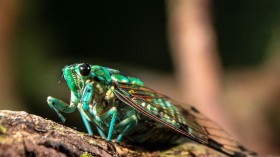A study found out that a cat's eye color could come from yellow-eyed tigers and blue-eyed leopards.
Experts said that there have been almost no studies with an evolutionary perspective on eye (iris) color, outside of humans and domesticated animals.
Family Felidae
They said that extant members of the family Felidae have a great interspecific and intraspecific diversity of eye colors, in stark contrast to their closest relatives, all of which have only brown eyes.
This made the felids a great model to investigate the evolution of eye color in natural populations.
Through machine learning cluster image analysis of publicly available photographs of all felid species, as well as a number of subspecies, five felid eye colors were identified: brown, hazel/green, yellow/beige, gray, and blue.
Experts said that using phylogenetic comparative methods, the presence or absence of these colors was reconstructed on a phylogeny.
Additionally, through a new color analysis method, the specific shades of the ancestors' eyes were quantitatively reconstructed.
The ancestral felid population was predicted to have brown eyed individuals, as well as a novel evolution of gray eyed individuals, the latter being a key innovation that allowed the rapid diversification of eye color seen in modern felids, including numerous gains and losses of different eye colors.
The researchers also found that the loss of brown eyes and the gain of yellow/beige eyes is associated with an increase in the likelihood of evolving round pupils, which in turn influence the shades present in the eyes.
Along with these important insights, the unique methods presented in this work are widely applicable and will facilitate future research into phylogenetic reconstruction of color beyond irises.
Scientists said that Amur leopards (Panthera pardus orientalis), rusty-spotted cats (Prionailurus rubiginosus), southern African wildcats (Felis lybica cafra) - a subspecies of the Afro-Asiatic wildcat, which is the ancestor of domestic cats - and two species of lynx can have up to four different eye colors, while most others have two or three.
Read Also: Cross-Eyed Cat Raises Awareness For Pet Adoption
Varied Trait
Scientists said that the eye (iris) color is one of the most conspicuous and varied traits among animals with irises.
To date, much of the work investigating eye colors has focused on humans. They said that this is not surprising, given how stark differences in human eye color can be, even between close relatives.
To assess the range of eye colors present in the Felidae, the researchers leveraged high-quality public image databases and sampled individuals from all non-domesticated felid species, as well as four related outgroups.
In the study, which eye colors are present for each taxa was determined impartially using color identification software.
''Within the 52 felid taxa considered in the study, gray eyes were found to be present in 38 taxa (73%), brown eyes in 28 taxa (54%), yellow/beige eyes in 23 taxa (44%), hazel/green eyes in 21 taxa (40%), and blue eyes in 7 taxa (13%),'' the study said.
The results of the study was in contrast with the assertion given that "eye color tends to be a species-specific trait in wild animals, and the exceptions are species in which individuals of the same age group or gender all develop the same eye color.''
Related Article: Humans Can Communicate with Cats by Blinking the Eyes Slowly and Using Other Facial Gestures
© 2024 NatureWorldNews.com All rights reserved. Do not reproduce without permission.






